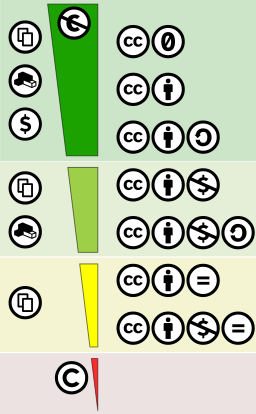Open Educational Resources (OER) are openly licensed educational materials, such as textbooks, videos, images, etc, that can be legally shared, re-used, and adapted at no charge.
These materials use open licenses like the Creative Commons license structure to enable users to share and recombine materials to suit their needs. These licenses, while they respect traditional copyright, also enable users to distribute, reproduce, or incorporate these materials into new learning resources by providing advance permissions for how the work can be used.
Given the rising cost of textbooks and the need to reduce the costs of education, OERs are an innovative way to save money not only for students but for libraries and institutions on a wider scale as more universities open up their content and adopt OER for use in their courses. In fact, in 2018 the Scholarly Publishing and Academic Resources Coalition (SPARC), an organization that tracks the adoption of open textbooks, announced that the use of OERs had saved over 1 billion dollars at some 4,000 institutions (SPARC, 2018).
OERs can be very important for student success too, as early research has shown. Students often report not purchasing textbooks due to high costs. However, without engaging with necessary information through textbooks, study guides, or exercises, student performance and retention can be lowered. A no-cost OER alternative help to ensure students have what they need to succeed.
Using OERs has numerous benefits such as:
- cost savings for students and institutions
- increased access to education
- flexibility to customize content collections
- increased student performance and retention


 Attribution license (CC-BY) - the user agrees to give attribution to the original creator, usually by naming the creator and the work and providing a link to the original work
Attribution license (CC-BY) - the user agrees to give attribution to the original creator, usually by naming the creator and the work and providing a link to the original work Non-commercial (CC-NC) - the user agrees that any sharing or re-use of the work will not be for commercial purposes
Non-commercial (CC-NC) - the user agrees that any sharing or re-use of the work will not be for commercial purposes No derivatives CC-(ND) - the user agrees that any sharing or display of the work will be unaltered copies of the work, not modified or remixed copies
No derivatives CC-(ND) - the user agrees that any sharing or display of the work will be unaltered copies of the work, not modified or remixed copies Share alike (CC-SA) - the user agrees that any sharing of derivative work will be done under a license identical (not more restrictive) than the license on the original work
Share alike (CC-SA) - the user agrees that any sharing of derivative work will be done under a license identical (not more restrictive) than the license on the original work Rights waived (CC-0) - the original creator has waived all rights to the work, releasing it to the public domain, freeing it to any use or adaptation, for any purpose, without attribution or licensing constraints
Rights waived (CC-0) - the original creator has waived all rights to the work, releasing it to the public domain, freeing it to any use or adaptation, for any purpose, without attribution or licensing constraints

